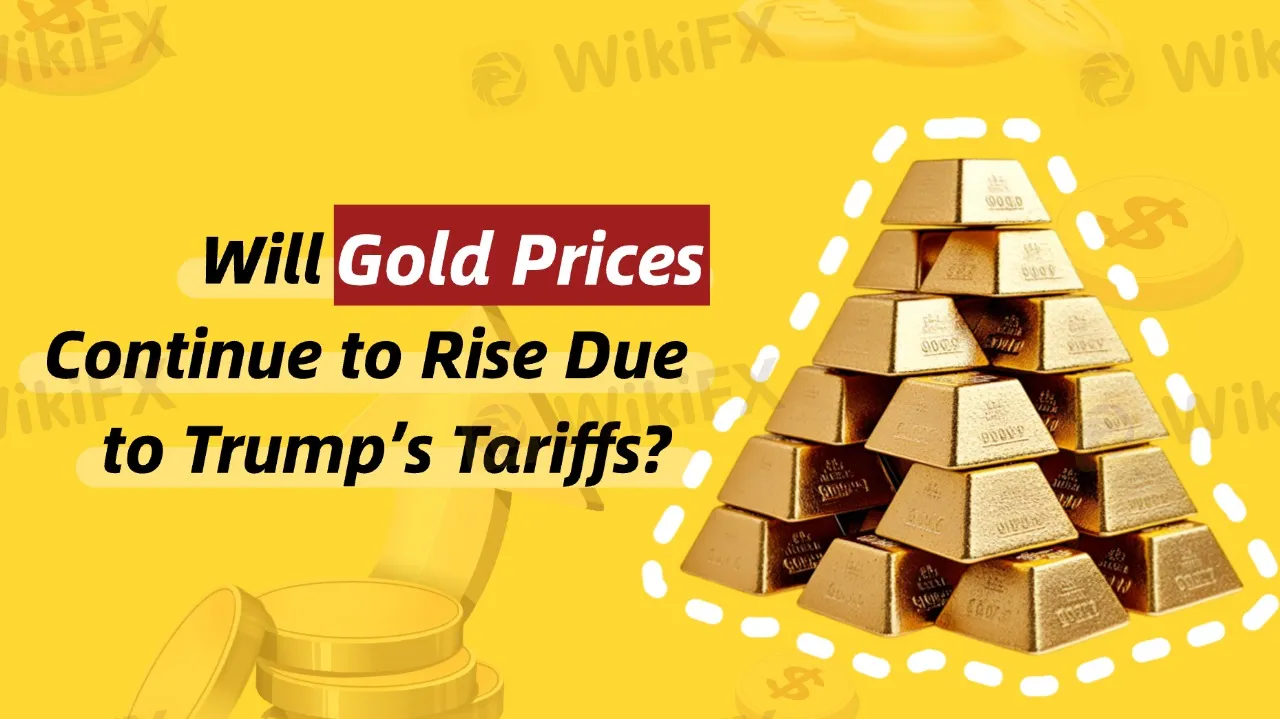简体中文
繁體中文
English
Pусский
日本語
ภาษาไทย
Tiếng Việt
Bahasa Indonesia
Español
हिन्दी
Filippiiniläinen
Français
Deutsch
Português
Türkçe
한국어
العربية
Will Gold Prices Continue to Rise Due to Trump’s Tariffs?
Abstract:Recently, gold prices have been driven by rising U.S. government debt, persistent inflation, and growing economic uncertainty, showing strong performance.

Last week, gold prices briefly broke through the key $2,700 per ounce level, reaching as high as $2,726. Despite a slight pullback last Friday, the weekly gain remained nearly 0.5%, closing at $2,702.35 per ounce. On Monday morning (January 20), spot gold showed some weakness, trading near $2,690, mainly influenced by the effective ceasefire agreement in Gaza and the strength of the U.S. dollar. However, analysts remain optimistic about gold's upward momentum.
From a technical perspective, gold is currently facing a key resistance level at $2,725, and breaking through this level remains challenging. Despite a recent rebound, it is uncertain whether gold will be able to break through this strong resistance. If successful, gold could continue to rise to $2,770 or higher. If the resistance holds, support may be found near $2,694, with further downside potentially reaching the $2,600 support region. However, if gold remains above $2,700, its potential for further gains will increase.
Impact of Trump‘s Tariffs on Gold Prices
The Trump administration’s statements about supporting U.S. manufacturing through trade tariffs have drawn attention. These have raised concerns about inflation and fears that global economic growth may be impacted by a trade war. As a safe-haven asset, gold tends to perform well in times of economic uncertainty and geopolitical tension. Trumps tariff policies are likely to intensify this uncertainty, supporting gold prices. In times of risk, gold attracts safe-haven capital.
In the short term, $2,725 remains a key resistance level. Whether gold can break through this level will depend on the impact of Trump‘s policies on the U.S. dollar, yields, and expectations for interest rate cuts. If tariff and spending policies affect economic growth and fiscal deficits, gold’s upward momentum may be supported.
Trumps tariff policies may boost the U.S. dollar in the short term, but in the long run, inflation could make gold a top safe-haven investment.
Overall, although gold has performed strongly recently, its future movement will depend on global economic conditions and Trumps policy changes. If concerns over tariffs and slowing economic growth continue, gold may break through current resistance and see new upside potential. However, in the short term, gold could face some technical pressure, and investors should watch for the latest developments.

Disclaimer:
The views in this article only represent the author's personal views, and do not constitute investment advice on this platform. This platform does not guarantee the accuracy, completeness and timeliness of the information in the article, and will not be liable for any loss caused by the use of or reliance on the information in the article.
Read more

What Determines Currency Prices?
The price of currency directly impacts investor returns. Understanding the underlying causes of currency fluctuations can help investors make more informed decisions in the foreign exchange market.

AvaTrade Launches Advanced Automated Trading Tools AvaSocial and DupliTrade
AvaTrade launches enhanced automated trading solutions, featuring AvaSocial and DupliTrade for seamless, emotion-free trading. Explore cutting-edge tools today!

Kraken Brings Back Crypto Staking for U.S. Users as Regulations Ease
Kraken reintroduces crypto staking for U.S. users in 39 states, supporting 17 assets with slashing insurance as regulations ease.

T4Trade Enhances Forex Trading with Advanced Tools for 2025
T4Trade empowers traders with advanced tools like trading calculators, Trading Central features, and an economic calendar for 2025.
WikiFX Broker
Latest News
AI Fraud Awareness Campaign: "We're Not All F**ked"
Crypto.com Delists USDT and 9 Tokens to Comply with MiCA Regulations
How to Use Financial News for Forex Trading?
Fake ‘cyber fraud online complaint’ website Exposed!
Day Trading Guide: Key Considerations
GMO-Z com Securities Thailand to Cease Operations in 2025
Oil Prices at $90 to $100 Could Push Philippines Inflation Beyond Target
Do More Liquid Currencies Yield Higher Profits?
Trump Media Expands into Crypto with $250M Truth.Fi Investment
NAGA Launches CryptoX: Zero Fees, 24/7 Crypto Trading
Currency Calculator






